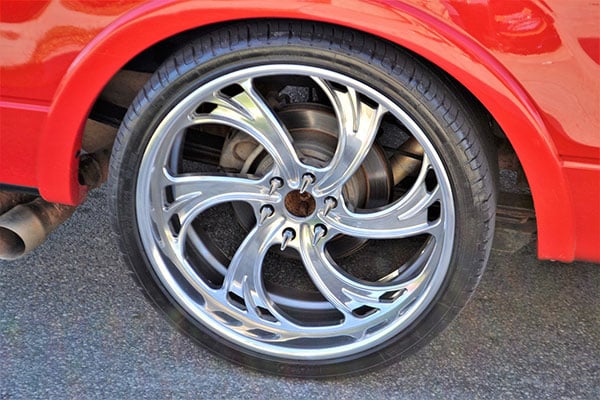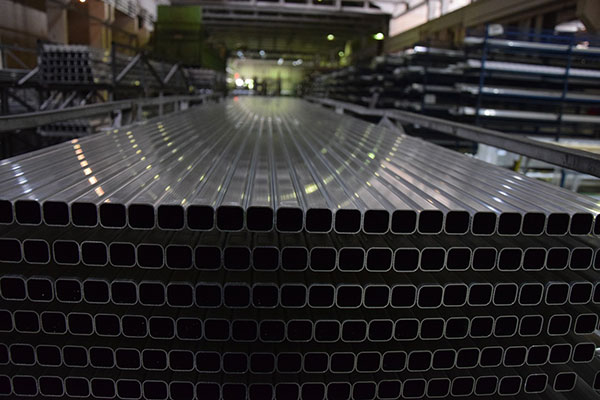 Generally, when people think of corrosion, rusted steel is most likely their thought. However, although steel is an important material of construction, aluminum is also a very vital material and is a more difficult metal to treat and protect from corrosion than is steel, in this author’s opinion.
Generally, when people think of corrosion, rusted steel is most likely their thought. However, although steel is an important material of construction, aluminum is also a very vital material and is a more difficult metal to treat and protect from corrosion than is steel, in this author’s opinion.
The aerospace industry wouldn’t be where it is today without aluminum. While composites are replacing some aluminum in aerospace and military applications, aluminum remains a mainstay. This article will highlight the major areas of aluminum cleaning, passivation, corrosion protection and monitoring. The subject matter is quite large, and more than this article can effectively review. Therefore, a liberal number of links are provided to learn more in specific areas.
No metal is resistant to corrosion in all environments. Through monitoring and understanding the environmental conditions causing the corrosion, however, changing the type of metal can also lead to significant reductions in corrosion, if the end-use application allows it. Monitoring surface conditions is also critical in protecting against metal deterioration from corrosion. Cracks, crevices or other surface defects; as a result of operational wear and tear or manufacturing flaws, all can result in greater rates of corrosion.
Researching anti-corrosion materials for your coatings formulation?
From primers to starter formulations, Prospector can help you find the technical data you need to get the job done. Register today for access!
Register for Prospector

Cleaning aluminum
In many cases, aluminum can be painted, but as with other metals susceptible to corrosion, the key to the efficacy and longevity of the coatings system is the proper preparation of the substrate before coating application.
Clean, manufactured aluminum forms an oxide layer almost immediately when exposed to the environment. A protective oxide film of aluminum is only stable in a pH range of 4.5 to 8.5, and chemical operations for the metal surface of aluminum include many process solutions for cleaning that intentionally exceed this pH range. These processes are designed to avoid harmful pitting or preferential etching. However, the aluminum’s susceptibility to pitting depends on many factors, such as chloride ion concentration, pH, dissolved oxygen in the corrosion environment and surface condition.
There are a number of commercial products used to clean the aluminum and prepare it for the next step which could be passivation, anodization or priming to paint. These range from acidic to basic pH and some are more environmental-friendly (bio-based) than others. Besides oxidation and preferential etching due to inclusions, the aluminum may have been exposed to metal working fluids during its fabrication. These fluids, although necessary for machining parts, do support bacterial growth, which in turn accelerate and exacerbate the corrosion process in aluminum. For all of these reasons, cleaning is very important. The more common type of cleaner is acidic in nature, and subsequently the part has to be rinsed after treatment.1,2
Passivation
A “passive” substrate is one that the environment affects or corrodes less than others. In passivation, a chemical reaction with the base material creates an outer layer of shield material. This shield material is applied as a microcoating. For aluminum, this reaction can be oxidation, or a chemical process known as anodization.
The desired outcome of passivation is controlled oxidation, to exclude included corrosion accelerators, which is accomplished by depositing a thin layer of pure aluminum over the alloy (alclading). For aluminum, the inert surface layer, termed the ‘’native oxide layer,‘’ has a thickness of 5 nm (50 Å) after several years.3
Aluminum anodization
Another type of passivation is anodization, which electrolytically coats a metallic surface with a thicker protective oxide. This is a progressively thicker oxide film than generated by other forms of passivation. This finish is more robust and also provides electrical insulation.
Chromate conversion coating for aluminum
Chromate conversion coating is a type of coating used to passivate aluminum. It is primarily used as a corrosion inhibitor, primer, or to retain electrical conductivity.4 The process is named after the chromate found in chromic acid (bath), which, until a few years ago, was the primary chromate conversion coating and based on hexavalent chromium (Cr+6). However, hexavalent chromium is highly toxic, so new, non-hexavalent chromium-based processes are becoming more readily available at a commercial level, such as trivalent chromium (Cr+3).
In Europe the REACH (“Registration, Evaluation, Authorization and Restriction of Chemicals”) Directive is used for wider applications including chromate conversion coating processes, paint primers and other preparations. The RoHS (Restriction of Hazardous Substances) Directive addresses elimination of hexavalent chromium in electrical and electronic equipment. In the US, MIL-DTL-5541 provides the treatment specification for chromate conversion coatings. Two commercial products are Alodine® and Iridite®.
In addition to the replacement of hexavalent chromium with trivalent chromium, several companies have developed new anticorrosive pigment and liquid additive technologies to protect aluminum from corrosion.5,6
Monitoring
Pitting potential is a term used to describe the likelihood of a metal to pit when electrochemically analyzed using a potentiodynamic scan of the metal and process solution system. Several efforts have been made to develop a usable test method that quantifies the pitting potential of a process solution relative to a selected alloy. In addition, the use of electrochemical impedance spectroscopy (EIS) has increased dramatically over the past decade. Based on impedance and resistance, it is a highly accurate analytical method to measure corrosion and as a standard characterization technique for many additional material systems and applications such as plating, batteries, fuel cells, etc.7
Aluminum is a fascinating material, and is always alloyed with other elements to achieve specific properties, such as strength, which not attainable with aluminum alone. Aluminum test panels are available from Q-Panel Corporation,8 as well as other suppliers globally. The Aluminum Association Material Design is the common name for alloyed aluminum.
Aluminum and its alloys are important metals. The ores of aluminum make it the most abundant mineral on Earth, and make it one of the most widely used metals for its exceptional properties. It, like other metals, has to be protected from the environment to maintain its performance.
Further reading:
- Protect Yourself with Corrosion Control and Industrial Coatings Resources
- Fundamentals of Corrosion Protection
- Understanding Corrosion Inhibitive Pigments
- The Chemistry of Corrosion Protection and Anti-Corrosion Coatings
References
- Products Finishing: Aluminum Surface Finishing Corrosion Causes and Troubleshooting
- Adhesive Technology: Surface Preparation Techniques on Aluminum [PDF]
- Wikipedia: Passivation
- Wikipedia: Chromate conversion coating
- ICL Industrial Products
- Coatings World: Wayne Pigments Patents Corrosion Inhibitor
- MIT OpenCourseWare: Impedance Spectroscopy [PDF]
- Q-PANEL Aluminum Panels [PDF]
The views, opinions and technical analyses presented here are those of the author or advertiser, and are not necessarily those of ULProspector.com or UL Solutions. The appearance of this content in the UL Prospector Knowledge Center does not constitute an endorsement by UL Solutions or its affiliates.
All content is subject to copyright and may not be reproduced without prior authorization from UL Solutions or the content author.
The content has been made available for informational and educational purposes only. While the editors of this site may verify the accuracy of its content from time to time, we assume no responsibility for errors made by the author, editorial staff or any other contributor.
UL Solutions does not make any representations or warranties with respect to the accuracy, applicability, fitness or completeness of the content. UL Solutions does not warrant the performance, effectiveness or applicability of sites listed or linked to in any content.



Corrosion is a disaster in the world of metals and steel .It can destroy them if not taken care in the initial stage only.Many companies out there in the market have come up with different technologies to fight the corrosion. So now its been easy to tackle this problem .Thanks for sharing this article.
I don’t think that I answered every question out there, but I try my best to provide an overview with several links for additional information. Thank you for your kind words.
It’s true that aluminum can be a difficult metal to treat when corrosion has begun to set on it. My brother happens to own an aluminum truck that he uses for truck shows, so it’s important for him to keep its appearance in pristine condition, so maybe he can use this.
When passivating Aluminium, what inspection methods are there to check that the passivation is to the correct specification?
There are many tests and probably the best bet is to use an outside testing laboratory. https://www.empcasting.com/ Aluminum alloy passivation: Due to the effect of the medium, the corrosion products of aluminum alloy die castings form a layer of film, which tightly covers the surface of the aluminum alloy die casting, changing the surface state. As a result, the potential of the aluminum alloy die-casting electrode greatly jumps in the positive direction and becomes a passive state of corrosion resistance.